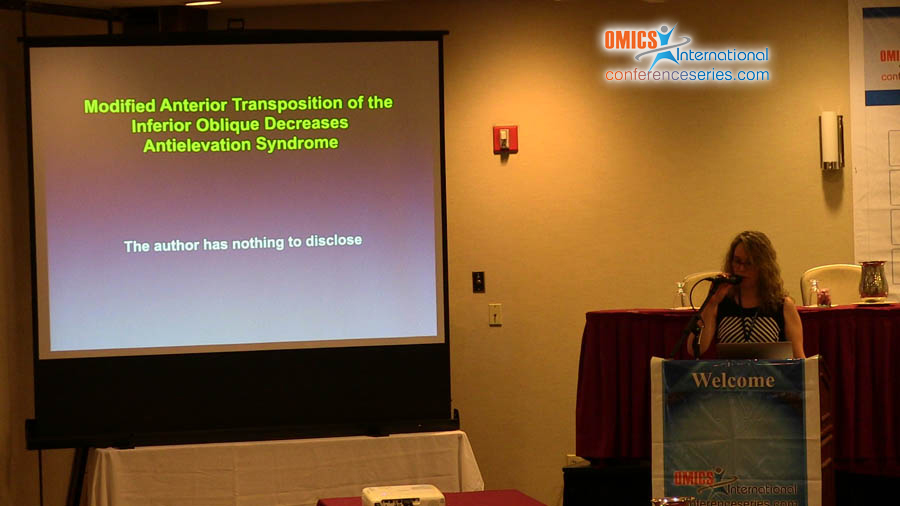Alexia Romanelli
Instituto Nacional de Oftalmologia, Bolivia
Title: Modified tecnique of Inferior oblique anterior transposition in DVD treatment reduces the Antielevation syndrome
Biography
Biography: Alexia Romanelli
Abstract
Many authors had described the Antielevation Syndrome following an Anterior Transposition of the Inferior Oblique muscle for Dissociated Vertical Deviation treatment as an undesirablecomplication that resembles a pseudo hyper function of the inferior oblique, associated with anantiaesthetic outcomein lateroversions. The classical technique consists in placing the inferior oblique temporarily, up, down or right beside the inferior rectus muscle insertion. The incidence of Antielevation Syndrome occurs in approximately 20% of the patients. Purpose: To present a modification to the classical Anterior Transposition of the Inferior Oblique technique, which significantly lowers the incidence of the Antielevation Syndrome. Methods: All patients included had DVD associated with moderate to severe inferior oblique over action, which could coexist with horizontal deviations. The surgical technique modification consisted in reattaching the inferior oblique right beneath the inferior rectus insertion. Patients who did not reachfor at least 12 months of follow up were excluded. A video of this new technique is showed. Results: Since 2006, a total of 101 patients underwent symmetrical modified anterior transposition of the inferior oblique. Horizontal deviations, if present, were corrected within the same procedure. Of these, only 3 (3%) showed Antielevation syndrome. Eighty five (85%) patients showed a satisfactory corrected DVD. The Follow up average was 18 months. Conclusions: The modified Anterior Transposition of the inferior oblique, immediately repositioned beneath the inferior rectus insertion, considerably diminish the appearance of an Antielevation Syndrome.



